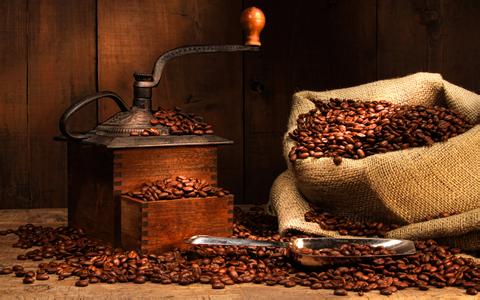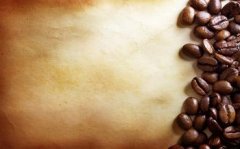The basic knowledge of Coffee interprets the name of Coffee Bean
Why coffee beans have such a long name? Why is there a single item, deep roast and Italian style of coffee? Where did so many names come from?

When you walk into a coffee store or open the website of a professional coffee and bean seller, you may be confused by the dazzling variety of coffee names. Why coffee beans have such a long name? Why is there a single item, deep roast and Italian style of coffee? How is this divided? What does it mean behind these seemingly complicated coffee bean names? This article will lead you to understand the meaning of coffee bean name item by item.
1. Indication of origin: "single product" and "comprehensive" coffee
The coffee beans sold in the market can be roughly divided into two categories:
Single Coffee (Single Origins- referred to as S.O)
Mixed coffee (Coffee Blends)
"single coffee" generally refers to a single style of coffee beans from a single country or producing area. It can be compared to a coffee solo.
If a bag of coffee is marked with the name of a coffee producing country (coffee beans are not produced in continental Europe, and if the name of an European city such as Italy, Vienna, etc., is written on the label, it is not a single product coffee.) Generally speaking, it means that this is a bag of individual coffee. Such as Ethiopia-Yega Chefe (Ethiopia Yirgacheffe), Sumatra-Batactenin (Sumatra Blue Batak), Guatemala-Antigua (Guatemala Antigua) and so on, the specific coffee produced in specific countries, producing areas and estates is called "single coffee". Because each country or different region has its own climate, soil and natural environment, the coffee grown has its own characteristics. Tasting "single coffee" can understand the characteristics and flavor of coffee in a certain country or region.
"mixed Coffee" refers to coffee beans mixed from several types of single coffee, which can be compared to a coffee concerto.
For example, the products of Huangding Coffee: blue Coffee, Duck Coffee, Capri Coffee and so on. The blending method of integrated coffee can be very simple (such as the traditional "Mamba": Mantenin plus Brazil), or it can be a complicated art. Through proper blending, individual coffee with different characteristics can be composed of more harmonious and wonderful movements. Usually the beans used in espresso (espresso, latte, cappuccino) are mixed coffee.
two。 Marking of baking degree: deep baking, Nanyi, Beiyi, Vienna, French baking
In addition to the labeling related to the place of origin, the most common is the marking of baking degree. Raw coffee beans need to go through the roasting process to release their unique charming aroma, and the roasting of coffee is closely related to its flavor.
If you see "Italian", "Vienna", "Nanyi" and other signs on the coffee label, do not mistakenly think that the coffee beans have anything to do with the above-mentioned place names-probably not, because traditionally, "Italy" and "Vienna" are synonymous with the degree of roasting (or blending) and do not mean that they are made in Italy or Vienna (as mentioned above). Coffee beans are not grown and produced in Europe.
"Beiyi" usually refers to medium-light, light brown, unoiled baking of beans; "Nanyi" usually refers to the deep baking of bright oil and dark brown on the surface of beans; and "Italian baking" generally refers to deeper baking. "French baking (French Roast)" generally refers to the extremely deep baking with a near-black color, slightly coke flavor and no acid. "Vienna" and "Miranchi" usually refer to mixed coffee made from coffee beans of different roasting degrees.
The deeper the degree of baking, the higher the temperature of the roasting. Generally speaking, the medium-shallow "Beiyi" baking flavor is more bright and light, may have fruit-like acidity, very low bitterness or no bitterness. The deep high-temperature baked "Nanyi" has a low, full-bodied and slippery flavor, with a sweet finish like caramel. The flavor of "French baking" is monotonous, with a slightly coke flavor and no acidity at all.
3. Grading of coffee beans, small producing areas, farms, and other signs
At present, the grading system of coffee bean producing areas in the world is not uniform, and each coffee producing country has its own grading system and grading name, so you may see the following words "SHB", "AA+", "Supremo", "Extra-Fancy", "round bean / adzuki bean" and so on on the coffee label, which are the grading names of coffee beans. Baked beans on the market are sometimes marked with the grading of individual coffee, usually not.
Central American coffee is graded on the basis of planting altitude, and coffee beans above 4500 feet above sea level are marked "SHB (Strictly Hard Bean)". "AA+" is the highest grade of Kenyan coffee, and only batches with particularly good flavor and few defects are allowed to be labeled "AA+". "AA" is the largest, "AB" is smaller, and "PB" is round beans. Colombia in South America uses the appearance size and defect rate of coffee beans as the grading standard, and "Supremo" represents the largest grain. It is worth noting that the appearance size of coffee beans has nothing to do with the flavor. The higher the altitude, the better the flavor.
The name of the country is immediately followed by the marking of small producing areas. Take Ethiopia-Ethiopia (Ethiopia Yirgacheffe) as an example. Ethiopia's Ethiopia is the name of the coffee-producing country, indicating that it is a "single coffee". The Ethiopia is a narrow, long, high-altitude producing area in Ethiopia's Sidamo district. Different small producing areas mean different flavor characteristics. For example, Ethiopia's famous Ethiopia-Haramoka (Ethiopia Harrar) is produced in southern Ethiopia near Somalia. Haramoka has wine-like aromas, blueberry or grape flavors, thick palate, fresh and bright Yega snow coffee, citrus or lemon peel aromas, and a thin palate.
However, some coffee beans have a list of names immediately after the name of a small producing area, which may be the name of a coffee farm, cooperative, or raw bean processing plant. Such as the long list of names of Guatemala, Antigua and Los Crop (Guatemala Antigua SHB- Finca Los Volcanes 08 Crop), tell us as follows
Information:
Producing country: Guatemala (Guatemala)-Guatemala is a famous coffee producer in Central America.
Producing area: Antigua (Antigua)-this is the country's famous volcanic coffee producing area.
Grading: extremely hard beans (SHB)-indicates that this coffee grows at an altitude of more than 4500 feet.
Production Manor: Finca Los Volcanes Manor-"Finca" is the Spanish word for "Estate", meaning farm.
Harvest year: 2008-the year is a reference for bakers, so the year is usually not marked on the baked bean label.
In the coffee beans sold in the market, in order to reduce the trouble and identification burden of consumers, they generally do not make such onerous signs. There may be great differences in the flavor of coffee beans in different small producing areas and different years. Professional roasters will taste the coffee beans of the same year in different producing areas every year, and adjust the way of roasting and blending, so that consumers can get products with stable flavor and small differences.
Important Notice :
前街咖啡 FrontStreet Coffee has moved to new addredd:
FrontStreet Coffee Address: 315,Donghua East Road,GuangZhou
Tel:020 38364473
- Prev

The method of judging the freshness of coffee beans basic knowledge of coffee what is the reason why coffee beans are not fresh
Have you ever seen oily coffee beans? Why do some coffee beans have a shiny surface, while others are "dry and comfortable" without greasy? What does the "oil" of coffee beans have to do with freshness? Should we buy coffee beans that are "oily" or "unoiled" in appearance? Coffee oil is not oil, which is evenly scattered on the surface of coffee beans. In fact, it is not "oil", but one.
- Next

The comparison of coffee beans the difference between Arabica and Robusta
In many places where coffee is sold, it is not difficult to find words like "100% Arabica". Even canned coffee appears in a style called "XX Arabica Coffee", which makes one wonder: what is "Arabica Coffee"? In fact, Arabica is the name of the coffee tree variety (species). Arabica (Coffea Arabica) and Robusta (Cof)
Related
- Guji coffee producing area of Guji, Ethiopia: Humbela, Shakiso, Wulaga
- What is the most expensive variety of Qiloso in BOP multi-variety group?
- How to store the coffee beans bought home?
- Why are Yemeni coffee beans so rare now?
- Ethiopian Sidamo all Red Fruit Sun Sun Santa Vini Coffee beans
- SOE is mostly sour? What does it mean? Is it a single bean? what's the difference between it and Italian blending?
- Is Italian coffee beans suitable for making hand-brewed coffee?
- How to choose coffee beans when making cold coffee? What kind of coffee beans are suitable for making cold coffee?
- Just entered the pit to make coffee, what kind of coffee beans should be chosen?
- Can only Japan buy real Blue Mountain Coffee? What are authentic Jamaican Blue Mountain coffee beans?

